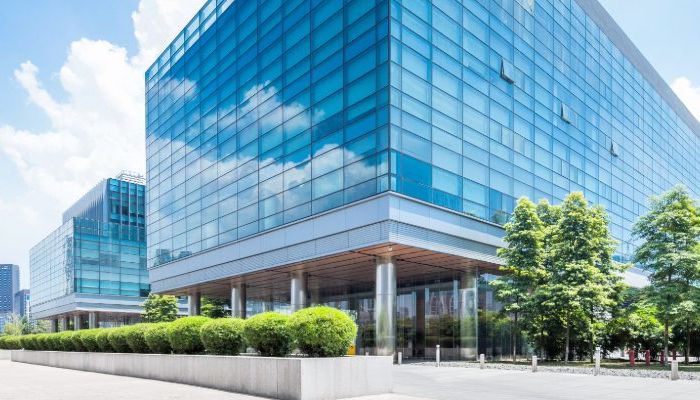Efficient facilities management (FM) is crucial for keeping everything running smoothly for the modern workplace. Whether you manage a large corporate campus or a small office, running your facility well can save money. It can also boost productivity and create better work environments. With the right strategies, facility managers can optimize performance, reduce downtime, and increase the overall quality of service.
In this article, we’ll dive into 8 best practices in facilities management that can help boost efficiency. Using advanced management software and doing preventive maintenance can help you improve operations. These tips will lead to better results.
Best Practice #1: Implement Facilities Management Software
In the digital age, facilities management software is a must-have tool for modern facility managers. Solutions like Computer-Aided Facilities Management (CAFM) and Integrated Workplace Management Systems (IWMS) offer a central platform. This platform helps manage different parts of a facility. It includes work orders, equipment maintenance, space planning, and vendor management.
Benefits of using FM software include:
- Improved data management: Store all facility-related data in one place.
- Streamlined operations: Automate tasks like scheduling preventive maintenance or tracking work orders.
- Better decision-making: Use real-time data and analytics to make informed decisions.
By using facilities management tools in your daily work, you can improve transparency, reduce paperwork, and boost efficiency.
Best Practice #2: Conduct Regular Preventive Maintenance
Preventive maintenance is one of the most effective ways to keep your facility running efficiently. Instead of waiting for equipment to break down, schedule regular inspections and repairs to prevent major failures. This proactive approach helps you avoid costly emergency repairs and downtime.
Steps for setting up preventive maintenance:
- Develop a maintenance schedule for all critical assets.
- Use FM software to automate reminders for inspections and service dates.
- Train staff on recognizing early warning signs of equipment failure.
Over time, preventive maintenance can extend the lifespan of your equipment, improve safety, and reduce unexpected disruptions.
Best Practice #3: Centralize Vendor and Contract Management
Managing several vendors and service providers can be overwhelming. Each one may have a different contract, billing cycle, and set of expectations. By centralizing vendor management, you can streamline the process, gain better control, and ensure that services deliver consistently.
How to centralize vendor management:
- Consolidate vendors where possible to reduce complexity.
- Ensure contracts have clear Service Level Agreements (SLAs) that define performance standards.
- Use facilities management software to track contract performance, renewal dates, and vendor interactions.
Centralizing this process improves oversight. It also helps you negotiate better terms, lower costs, and build stronger relationships with vendors.
Best Practice #4: Optimize Space Utilization
Space is one of the most costly resources in a facility. Using it inefficiently can waste money. Optimizing space utilization is critical for cutting costs and making the most of your available square footage.
Steps for optimizing space:
- Conduct regular space audits to understand how space is being used.
- Implement flexible workspaces such as hot-desking or shared workstations to maximize usage.
- Consider downsizing underutilized areas or repurposing them for new needs.
Better space utilization leads to lower overhead costs, improved employee satisfaction, and a more flexible work environment.
Best Practice #5: Promote Sustainability Initiatives
Sustainability isn’t just good for the planet—it’s also great for your facility’s bottom line. Incorporating green practices can reduce energy consumption, lower utility bills, and enhance your company’s reputation.
Examples of sustainability initiatives include:
- Upgrading to LED lighting or energy-efficient HVAC systems.
- Implementing a waste management and recycling program.
- Installing motion sensors to automatically turn off lights in unused spaces.
By investing in sustainability, you not only help the environment but also reduce operational costs over time, making your facility more efficient.
Best Practice #6: Ensure Health and Safety Compliance
Ensuring that your facility complies with health and safety regulations is not just a legal obligation—it’s a key factor in improving efficiency. Regular safety audits, inspections, and training sessions help identify potential risks and ensure that employees and visitors are safe.
Best practices for health and safety compliance:
- Stay updated on the latest health and safety regulations.
- Conduct regular safety drills and inspections.
- Document compliance efforts and train staff regularly.
Having a safe facility not only prevents costly fines and lawsuits but also boosts employee morale and productivity.
Best Practice #7: Use Data to Drive Decisions
Incorporating data into your decision-making process is a powerful way to improve efficiency. Tracking key performance indicators (KPIs) like energy usage, maintenance costs, and space occupancy rates can provide valuable insights into where improvements can be made.
Important KPIs to track include:
- Maintenance costs per square foot
- Energy consumption by building or department
- Response times for work orders
By analyzing these metrics, you can identify inefficiencies, cut unnecessary costs, and make data-driven decisions that benefit your facility in the long term.
Best Practice #8: Foster Strong Communication and Collaboration
Efficient facilities management relies on effective communication. Without it, tasks get delayed, issues go unresolved, and team coordination suffers. By fostering strong communication and collaboration among your team, you can ensure tasks are completed quickly and correctly.
Tips for improving communication:
- Use collaboration tools like email, chat apps, or FM software to keep everyone informed.
- Create a feedback loop where staff can easily report issues and share suggestions for improvement.
- Hold regular meetings to keep your team aligned on goals and priorities.
Strong communication helps reduce bottlenecks, ensures transparency, and leads to faster problem resolution.
Conclusion
Efficiency in facilities management doesn’t happen by accident—it requires a strategic approach. By implementing these 8 best practices, facility managers can streamline operations, reduce costs, and improve overall performance. From using advanced software to optimizing space and fostering better communication, each tip offers practical steps to boost efficiency in your daily FM tasks. Start incorporating these best practices today, and see the difference they make in your facility’s operations!
Checklist Summary:
- Implement Facilities Management Software
- Conduct Regular Preventive Maintenance
- Centralize Vendor and Contract Management
- Optimize Space Utilization
- Promote Sustainability Initiatives
- Ensure Health and Safety Compliance
- Use Data to Drive Decisions
- Foster Strong Communication and Collaboration










